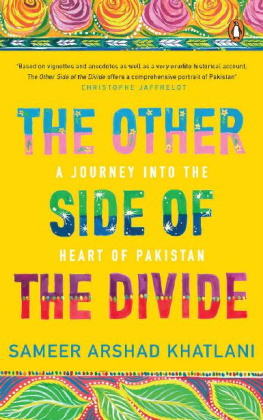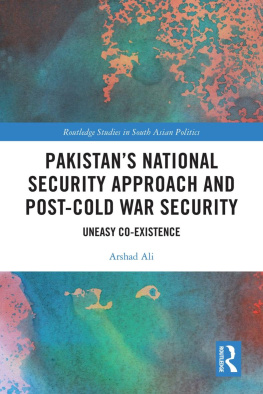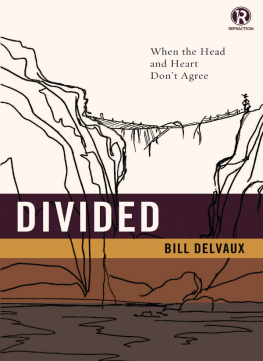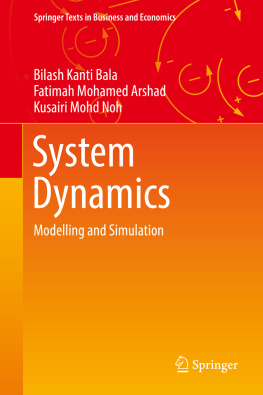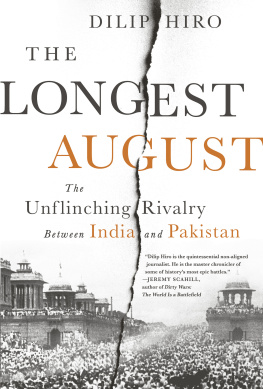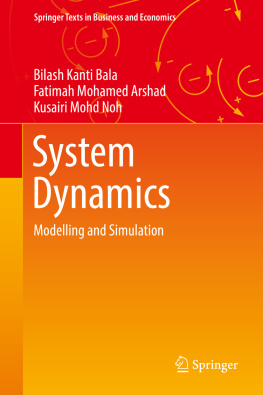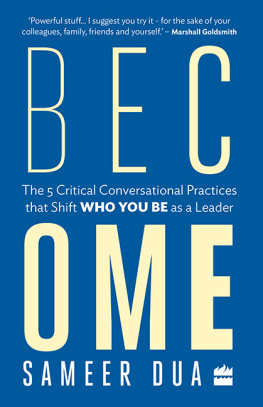Sameer Arshad Khatlani - The Other Side of the Divide: A Journey into the Heart of Pakistan
Here you can read online Sameer Arshad Khatlani - The Other Side of the Divide: A Journey into the Heart of Pakistan full text of the book (entire story) in english for free. Download pdf and epub, get meaning, cover and reviews about this ebook. year: 2020, publisher: Penguin Random House India Private Limited, genre: Politics. Description of the work, (preface) as well as reviews are available. Best literature library LitArk.com created for fans of good reading and offers a wide selection of genres:
Romance novel
Science fiction
Adventure
Detective
Science
History
Home and family
Prose
Art
Politics
Computer
Non-fiction
Religion
Business
Children
Humor
Choose a favorite category and find really read worthwhile books. Enjoy immersion in the world of imagination, feel the emotions of the characters or learn something new for yourself, make an fascinating discovery.
- Book:The Other Side of the Divide: A Journey into the Heart of Pakistan
- Author:
- Publisher:Penguin Random House India Private Limited
- Genre:
- Year:2020
- Rating:3 / 5
- Favourites:Add to favourites
- Your mark:
- 60
- 1
- 2
- 3
- 4
- 5
The Other Side of the Divide: A Journey into the Heart of Pakistan: summary, description and annotation
We offer to read an annotation, description, summary or preface (depends on what the author of the book "The Other Side of the Divide: A Journey into the Heart of Pakistan" wrote himself). If you haven't found the necessary information about the book — write in the comments, we will try to find it.
The Other Side of the Divide: A Journey into the Heart of Pakistan — read online for free the complete book (whole text) full work
Below is the text of the book, divided by pages. System saving the place of the last page read, allows you to conveniently read the book "The Other Side of the Divide: A Journey into the Heart of Pakistan" online for free, without having to search again every time where you left off. Put a bookmark, and you can go to the page where you finished reading at any time.
Font size:
Interval:
Bookmark:



PENGUIN BOOKS

PENGUIN BOOKS
For my son, Orhan Ahmed Khatlani, and kids of his generation. May they grow up to live in a peaceful and prosperous South Asia free of bigotry and conflict.

A blinding haze enveloped much of Delhi and its surrounding areas as it usually does in December and January. The sun was nowhere to be seen; traffic pile-ups were claiming lives. The air, rail and road traffic were all but paralysed. Around 3000 km away, I spent the last hours of my holiday at a resort in Kerala perched on top of rolling green hills in Munnar, fretting about the gloomy weather. I had put in the hard yards, managed the clearances and even the most important but restricted visa. The haze threatened to rain on my parade though. Uncertainty loomed large over the trip as poor visibility had grounded most flights for two days. Then, lo and behold, the skies opened up on the third day to wash away the haze blinding the air traffic. My return flight from Kerala landed smoothly in Delhi. I had my fingers crossed; near-perfect visibility was forecasted for the next few days.
For once, the forecast was not wide off the mark. The haze let up but the faces at home kept getting longer. I sidestepped all attempts to talk me into abandoning the trip. How could I? At stake was the rare chance of writing reports for the Times of India, where I worked, datelined Lahore. Only the weather could have put a spanner in the works. The haze held out hope for a few days for the family; but much to their disappointment, the visa had come through earlier than expected. For my wife, Qudsiya, and my in-laws, the idea of visiting Pakistan was rash. Like any average Indian, they hear, see and watch nothing that might humanize Pakistan. Not surprisingly, the country comes across as a hopelessly dark land because to its portrayal in the news media, the cinema, as well as the terror attacks that emanate from that country. Pakistan conjures up images of a paranoid, insecure, humourless and dangerous place in the minds of ordinary people. There is no other side to Pakistan. It is different the other way around. Indias soft power, the reach and impact of Bollywood, helps offset anti-India sentiments in Pakistan. It humanizes India among the Pakistani masses; many shared problems besetting the two countries thus appear to be lopsided.
The reason for my in-laws aversion to Pakistan ran deeper. It can be traced to a latent legacy of wounds the subcontinents division inflicted on them and millions of other ordinary people. The rupture hit close to home, upended their lives for years and permanently called into question their allegiance to their beloved land: India. It opened a Pandoras box, made them vulnerable to reprisals for real and imagined crimes even of medieval empire builders who happened to be Muslims.
My grandfather-in-law, Muhammad Sadiqs predicament mirrored those of millions of Muslims suddenly caught on the wrong side of the IndiaPakistan division. He had little in common with the minuscule Urdu-speaking elite, who dreaded the majoritarian domination of the kind that found echoes, for instance, in far-right Rashtriya Swayamsevak Sangh (RSS) chief Madhav Sadashiv Golwalkars writings. The RSS, which is the ideological fountainhead of the ruling Bharatiya Janata Party (BJP), was founded in the 1920s. Its founding fathers, like Golwalkar, were particularly antagonistic to the Muslims. Golwalkar considered them the real enemy and despoilers.
This spectre of majoritarianism stoked elitist Muslim anxieties in the final years of the British rule. Muslim League leader Muhammad Ali Jinnah, tapped into these anxieties and even called an avowedly secular Congress a Hindu body.
Sadiqs concerns were basic. He was bothered more about a square meal than the fate of the Urdu language or equal representation. By mid-1940s, he had landed a job at the British Civil Services Academy in Delhi as a tailor. The job was no mean feat. Sadiq had overcome the trauma of being orphaned as a child and the abuse he had suffered at the hands of the relatives who were forced to raise him. He equipped himself with the skill of tailoring to find the job. Things were looking up; Sadiq was living happily with his family at a quarter the academy offered him in Delhis posh Metcalfe House neighbourhood.
The upturn in Sadiqs life was cut short with the end of the British Empire, hastened by the Second World War. The war sapped the Empires vitality, robbed it of the will and the resources to govern the jewel in its crown. Pakistans idea as a separate Muslim homelandwhich was dismissed as chimerical and impractical in the 1930snow suddenly gathered steam. A tacit British support was at playthe payback Muhammad Ali Jinnah received for backing the British war effort. Jinnah revived a moribund Muslim League to rally support for Pakistans creation. His opponent Jawaharlal Nehru and other major proponents of a united India were hamstrung and behind bars until the end of the war in 1945. The Empire was bankrupt. It quit India two years later, but not before having Indians at each others throats. Discord had sustained British rule in India. It manifested as genocidal violence when it ended with the haphazard division of India.
The ham-handed division first triggered violence in Punjab. It sent tens of thousands of refugees scurrying for their lives across the newly drawn border. Brutalized Hindus and Sikhs began pouring into Delhi. The brutalities they faced triggered violence against Delhis Muslims. As many as 20,000 are estimated to have been killed while more than a quarter
Precious little was done to control the situation. At an emergency cabinet committee meeting, Vallabhbhai Patel, who was in charge of law and order as the home minister, insisted there was bound to be trouble if as a result of these Muslims not moving out, it proved impossible to accommodate non-Muslim refugees coming from the West.
The situation totally went out of control by October 1947, when Governor General Mountbattens chief of staff, Lord Ismay, reported Muslims being systematically hunted down and butchered while thousands of them were herded into camps.
Sadiq, his wife, Bano, and their children were among those herded into the Old Fort campone of the two camps established for Muslim survivors of the post-Partition Delhi massacre. As if that were not enough, a large number of the internally displaced people were put on trains and sentagainst their will in many casesacross the border following the closure of the camps. The cross-border journey was the longest most of them had ever undertaken. For many, it also proved to be the last. Mobs on either side waylaid cross-border trains to slaughter desperate refugees fleeing their homes to safety.
Sadiq had little idea about the world beyond Delhi and Meerut, around 50 km away, where his ancestors had settled sometime in the nineteenth century after apparently participating in the 1857 revolt against the British. Pakistan may have been offering great opportunities to well-connected and highly educated refugees needed to man the new state, but the country had little to offer to the likes of Sadiq, a virtually unlettered man who knew and loved India as his only home. An uncertain future for him at home was far better than an undignified existence in a refugee camp thousands of kilometres away in an alien land. Sadiq chose India. It, however, took him and his family years to overcome the trauma of displacement and to get on with their normal lives. For them, Pakistan remains a nutty idea, a so-called homeland for the Indian subcontinents Muslims where a significant proportion of them could never have been accommodated.
Font size:
Interval:
Bookmark:
Similar books «The Other Side of the Divide: A Journey into the Heart of Pakistan»
Look at similar books to The Other Side of the Divide: A Journey into the Heart of Pakistan. We have selected literature similar in name and meaning in the hope of providing readers with more options to find new, interesting, not yet read works.
Discussion, reviews of the book The Other Side of the Divide: A Journey into the Heart of Pakistan and just readers' own opinions. Leave your comments, write what you think about the work, its meaning or the main characters. Specify what exactly you liked and what you didn't like, and why you think so.

